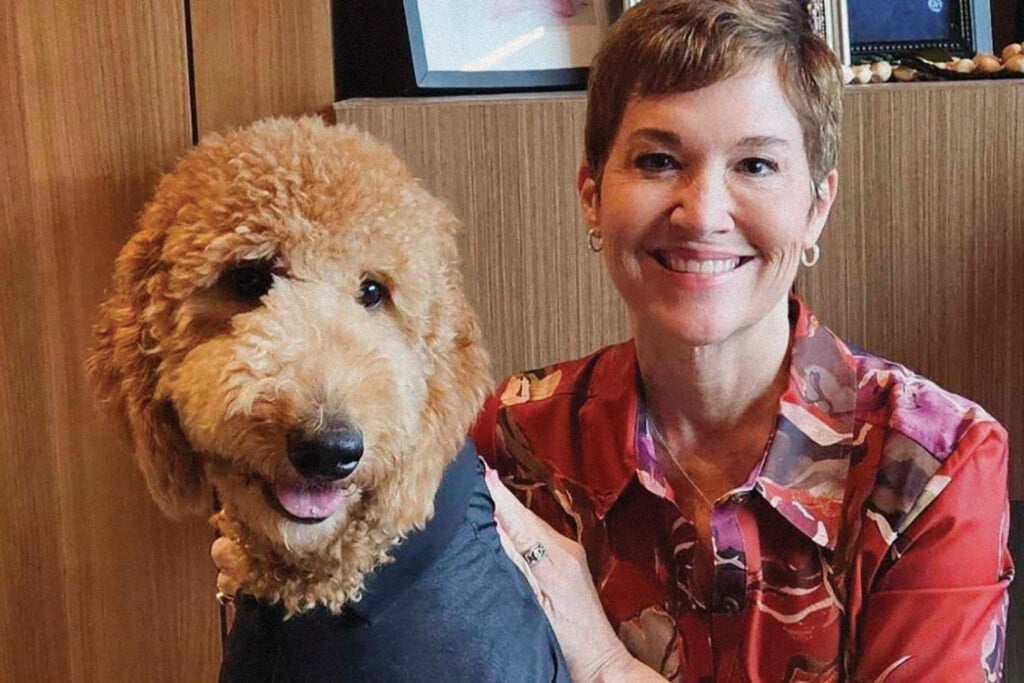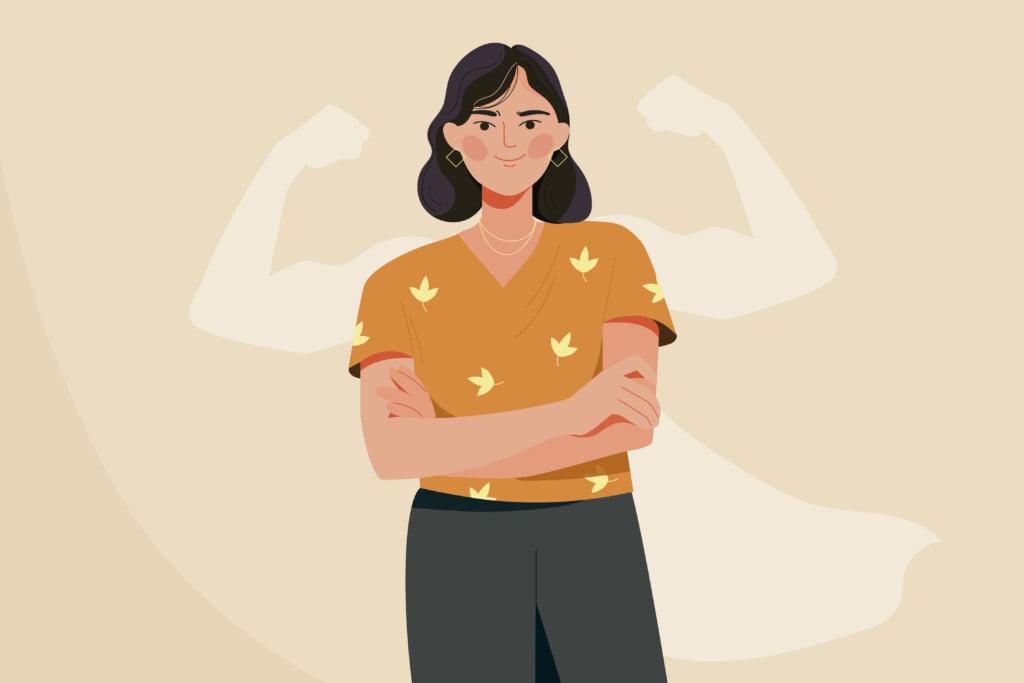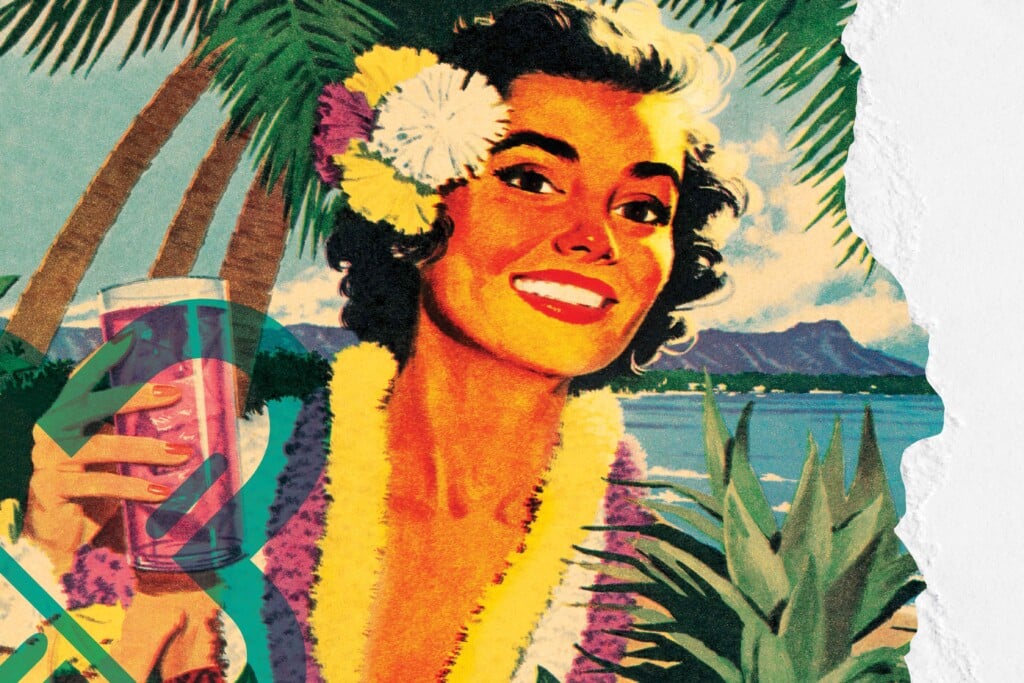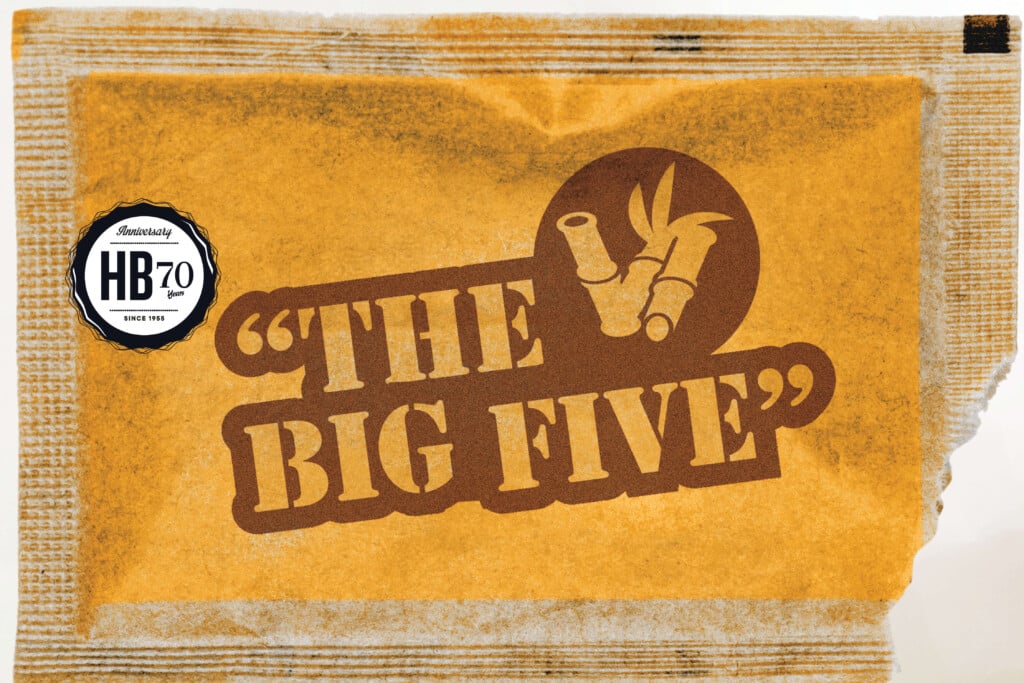8 Women Who Save Lives
Their jobs are difficult, stressful and sometimes dangerous but Hawai‘i depends on these women to step up when lives are on the line. We tell their stories and honor their courage, resilience and compassion.
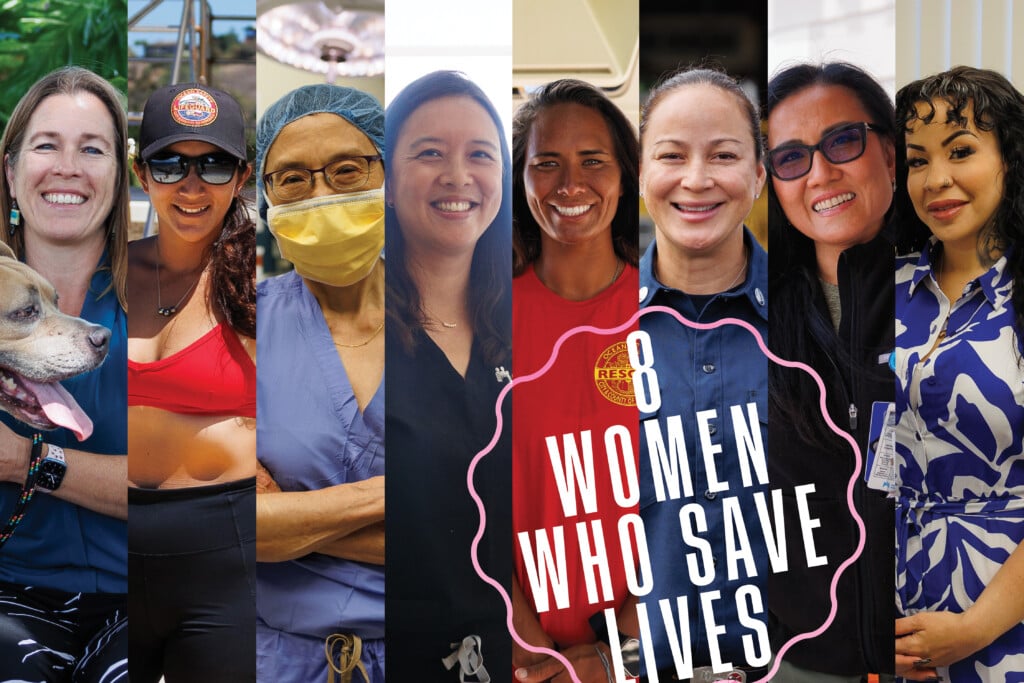
Every day across the Islands, women step into roles where the stakes could not be higher. Their jobs are difficult, stressful and sometimes dangerous but Hawai‘i depends on them to step up when lives are on the line. From emergency response and providing critical healthcare to social services and advocating for the humane treatment of animals, these women embody excellence in service to others. We tell their stories and honor their courage, resilience and compassion.
Dr. Lois Chiu
Dr. Lois Chiu emigrated from Hong Kong to New York City with her family when she was 9. She recalls her parents frequently reminding her and her brother about the stakes. “We came here, we didn’t speak the language, we didn’t have much money and we kind of risked it all to come here,” Chiu says. And she remembers her parents telling them: “You need to do something to make a better life for yourselves.”
When it came to careers, Chiu says her parents would approve of them being doctors, lawyers or businesspeople, and nothing else. “My brother chose business, and I chose medicine.”
While attending medical school in Syracuse, New York, she was encouraged to do a one-month “away rotation,” which enabled her to focus on a specific specialty at an outside hospital. She’d already decided she wanted to work in pediatrics and was initially interested in an allergy and immunology subspecialty.
When she applied for an allergy and immunology rotation at Columbia University, she says the only thing that was available was an NICU rotation. “I just wanted to go to New York [City], so I took it and ended up really loving it,” Chiu says of her time in a neonatal intensive care unit.
After completing a neonatology fellowship in 2009, she moved to Oʻahu with her husband to be closer to his family and began working at Kaiser Permanente Moanalua Medical Center.
NICUs are where neonatologists like Chiu care for babies born prematurely or with other health problems. The Moanalua Medical Center’s NICU has 18 beds and she says they care for an average of 14 to 15 patients at a time. According to Chiu, most of her patients are “preemies,” sometimes born as early as 22 weeks. The full gestation period is 40 weeks, so babies that premature are “barely halfway cooked when they’re born.”
Parents of premature babies are often fearful and anxious, Chiu says.
“When people imagine a baby, they imagine this big, fat baby crying. But when you’re born at 23 weeks, you’re not crying, you’re definitely not fat and your skin is so transparent.”
Their care needs are unlike those of a full-term baby. For example, “If you talk to a pediatrician, when they say they’re starting feedings on a baby, they’ll say, ‘Start with 1 ounce, 2 ounces.'” Whereas with premature babies, Chiu says, “We’re talking milliliters. Like 1 mL, 2 mL.”
The criterion for discharge isn’t based on age or weight, she says, but on a baby’s medical stability and a skills-based assessment: “In order to go home, you have to be kind of like a term baby. So you’ll have to be able to breathe on your own. You have to be able to eat on your own.”
As a neonatologist, supporting and educating parents is just as important as caring for her patients. “Many parents will tell you they’re afraid to touch their own baby because they don’t know if it’s gonna hurt them,” Chiu says, but it’s her job to make sure the parents learn how to tend to their little ones while they’re in the NICU, which makes the transition home easier.
“Family-centered care is a part of our philosophy, so parents are participating,” she says. That includes having them feed their babies, change their diapers and provide input on “what they think would make the baby get better faster.”
Because the state’s only NICU facilities are on Oʻahu, families from the Neighbor Islands face additional challenges.
“When those babies are transported here, they can stay four or five months, even longer. What happens to the mom and dad? Do they come here? If they come here, where do they stay? Many of them do not have families [on Oʻahu]. Or even if they have families here, they can’t ask the family, ‘Can I live with you for the next four months?’ So they’re often displaced,” Chiu explains.
Ronald McDonald House Charities is an international nonprofit that helps families in such precarious situations. It has two “beautiful houses” in Mānoa Valley for families to stay for free as long as needed.
Chiu has served on the Ronald McDonald House Charities’ local board for the past five years and she just finished two years as board chair.
“This charity has been very meaningful to be part of. … They provide food, like the refrigerator is always stocked with something. They have activities for the family. They have a shuttle that brings the families to the hospital and back. So it’s a very convenient and wonderful service for families who are with kids in the hospital.”
Chelsea Kahalepauole-Bizik
Chelsea Kahalepauole-Bizik’s life has always revolved around the ocean.
Long before becoming the Honolulu Ocean Safety’s first wahine lifeguard lieutenant, the Kailua native recalls going out on her father’s boat: “I was 5 years old [riding] on his back while he was diving for tako in Kāneʻohe Bay. I thought it was so cool, catching tako to make squid luau.”
Around the same age, she says, she “learned how to surf at Castle Point, which is on the far left side of Kailua Bay.” And at 11, she fell in love with paddling. When interviewed, Kahalepauole-Bizik, now 34, was training to compete in her 10th Na Wahine O Ke Kai, a 41-mile outrigger canoe race from Molokaʻi to Oʻahu.
Her lifeguarding career started at a hotel pool when she was 18, where she learned the job’s fundamentals. She says that initial experience helped her develop “the eye for children in trouble” and recognizing what lifeguards call “climbing the invisible ladder,” because contrary to what is often portrayed in movies, a drowning person is rarely yelling for help or making large splashes. Instead, they often silently struggle to breathe and keep their head above water, which usually looks like them trying to grab onto a ladder that’s not there.
After joining the city’s Ocean Safety team in 2011, Kahalepauole-Bizik was assigned to District 2, which includes Moanalua Bay to Kāneʻohe Bay. She says the Windward Side was “a great place to start” because “it’s such a mix of different types of beaches.”
One challenge is Hanauma Bay, where “at any given time, about 200 people are in the water, face down,” so lifeguards must learn how to identify someone who’s lost consciousness among a sea of snorkelers: “One of the telltale signs is the top of the snorkel is in the water. You count how long the snorkel has been in the water; 15 seconds, then you’re like, ‘OK, that person needs help.'”
Meanwhile, down the highway is Sandy’s, a popular surfing, bodysurfing and bodyboarding spot that has a powerful shore break notorious for breaking bones. “So, you’ve got back injuries, neck injuries at Sandy Beach and Makapuʻu, and then you’ve got CPR cases at Hanauma Bay, Kailua and Waimānalo. You have a mix of all of it.”
Kahalepauole-Bizik also spent time in dispatch, where she acquired other skills: “I feel like dispatch was a really good place for me to learn how to be a supervisor, because you listen in on all these different calls and how the other supervisors handle them, and it’s all just scenarios, right? You start to look at things as a scenario. … Then you understand what information is needed to pass along to the other departments, like HFD and EMS and the Coast Guard.”
When four Honolulu Ocean Safety Lieutenant positions opened in 2023, Kahalepauole-Bizik applied and interviewed for the job alongside 20 to 30 other lifeguards.
“I was hoping I did well, but you never know,” she says. “I got a phone call and the chief told me, ‘We’d like to offer you the position. You scored third highest out of four, so the position that’s still open is in District 2.’ I was like, ‘Oh my gosh, that’s where I’m from,’ and I kind of teared up a little.”
As a lieutenant, Kahalepauole-Bizik serves as both a mobile responder to calls at unguarded spots within her district, including China Walls and Spitting Caves, as well as a supervisor during rescues at guarded beaches.
“If there’s only one guy, then of course, you’re jumping in to help and assist. … You’re making sure the communication is getting out there and that backups are coming for your tower guards, making sure your tower guards have all the equipment that’s needed. And then, after the scenario is finished, replenishing their equipment, getting their statements of what happened and making sure that they’re OK.”
What advice does she have for other women interested in Ocean Safety? “Probably just what I got said to me, which is just stay true to yourself, share your aloha and give everything you got. When you don’t have any more to give, give some more. That’s one thing females are good at – giving their all and giving their aloha.”
Yna Zimmerman
Yna Zimmerman, R.N., is on a mission to make quality healthcare more accessible in Kona.
With 17 years of nursing experience in Northern California, she joined the Kaiser Permanente Kona Medical Office in 2022 and quickly identified a significant limitation in their Nurse Treatment Center’s triage.
“If a patient comes in with, let’s say, chest pain, which is the common one, our options were limited to just [making] future appointments or ‘I’ll call an ambulance for you,'” she says. “Now, we try our best to accommodate that patient without an appointment.”
Zimmerman and her fellow nurses are now able to ask a supervising provider to order an EKG so they “can rule out if it’s real chest pain or just heartburn,” she says, which saves the patient the scary experience of being redirected to the ER but unsure if they’re having a heart attack.
“Even though it says we don’t have emergency services here in Kaiser Kona, they still trust us to take care of them, so that’s why we try our best.”
The Nurse Treatment Center has expanded its capabilities in other ways under Zimmerman’s leadership, including offering more kinds of pulmonary testing and placing Holter monitors that record patients’ heart rhythms. “So instead of the patient flying to Oʻahu to do that, the patient will be coming to our clinic,” she says, which saves them time, money and hassle.
Continuing to expand services offered to patients in Kona is top priority for Zimmerman. “I believe all nurses have the same mission: to save lives. But with limited resources, we cannot do much. I’m hoping for this clinic to expand so we can provide more care for our patients. … That’s my opinion, and that is my passion, and I really want to help. I even told them that I’m willing to work 12 hours if you open an urgent care, so let’s just get it started.”
Although her team is not yet able to insert a PICC line – a long catheter inserted into a peripheral vein, typically in the arm, for long-term intravenous treatment – the nurses at Kona Medical Office are now able to assist patients with PICC line dressing changes and teach them how to care for their PICC line at home.
Indeed, Zimmerman says education is an important part of her job: “It’s a privilege for me to educate my patient, whether it is an insulin teach or glucometer teach or even just a simple antibiotic self-administration teach. I feel like I give them comfort when I sit down with them and give them instructions in the easiest way possible that they can follow. They appreciate that a lot, and I don’t let them go until they feel comfortable doing so.”
Zimmerman attributes her aptitude for nursing to being from a family of caregivers. “My sister is an OBGYN doctor and my aunties are all nurses. … So it kind of inspired me to do nursing and provide care for people in the community, but especially the unfortunate ones. I guess it’s in my blood,” she says.
Though they may not have as many resources as facilities on Oʻahu, Zimmerman says, she finds strength in her colleagues, who have become like a second family. “We are like a big family, so we support each other,” she says, citing a work culture where potlucks are a frequent and beloved tradition. “Even when we don’t have any reason for potluck, everybody brings food, so it makes my heart happy.”
Kapua Chang
Honolulu City and County Ocean Safety employs about 300 lifeguards, but only a dozen or so are women. Among them, Kapua Chang holds the distinction of being Oʻahu’s first and only woman rescue watercraft operator.
“From the moment I got into recruit class as a lifeguard, I remember seeing the boys out on the jet ski and being like, ‘Wow, that’s the job that I want to do,'” she says.
After becoming an ocean safety officer in 2021, Chang immediately started training for the additional certification. She says she continued building her skills as a water woman by following the advice of veteran guard Tau Hannemann: “Get in the water every day, whether it’s a train or it’s a surf or to explore your zone … and be confident in wherever you are.”
This dedication was put to the test when she enrolled in Ocean Safety’s seven-week intensive rescue watercraft program in 2024. “At the very beginning, my head instructor, Ian Forester, told me in front of everybody, ‘Kapua, congratulations for being the first female. But just because you’re female, we’re not gonna take it any easier on you.'”
Chang says she wouldn’t want it any other way “because then the guys in the tower would say, ‘Kapua had it easy, you know, she had special treatment.’ Absolutely not.”
Trainees must pass several tests to become certified rescue watercraft operators. “The first is a written assessment,” says Chang, who explains the course has five required reading materials. “There’s about 50 questions, about 10 questions from each manual, and you have to pass with an 80% or higher.”
After passing the written exam, trainees face a physical assessment that requires them to expertly operate a jet ski in 25-foot surf on the North Shore, as measured by the Hawaiian scale. (The face of such a wave would be about 50 feet.) That means knowing how to harness the power of adrenaline without letting it take over.
“There was so much adrenaline running through that class,” she says, it’s imperative to know how to “scale it back and rest your mind from spiraling out.”
Trainees also take turns playing the roles of patient and crewman while simulating rescues in massive surf. In hazardous conditions, “you have to be on it. Every detail, every move, is very critical, because not only your life is in danger, but also the crewman that you’re working with, the patient that you’re working with. So you have to be on your best game, top tier.”
Chang was one of four graduates that completed the program in December 2024. Because she’s “at the bottom of the totem pole in terms of seniority,” she still works primarily as a tower guard. Nevertheless, she’s eager to take every chance she gets to be on the watercraft. “If I can get a day on the ski,” she says, “I’m absolutely excited. I’m stoked.”
The two positions work hand-in-hand to protect people both close to shore and further out to sea: “The jet ski is considered the tip of the spear of Ocean Safety,” she says. “When you’re on the ski, you’re moving and assessing situations quickly but thoroughly to help whoever’s out a mile away or several miles away from the tower.”
Four years into her lifeguarding career, the Lāʻie native has already worked in four out of the Island’s five districts, with only the Leeward Side to go.
Although her natural inclination is to stay low-key, Chang says she now feels it’s important to be more visible “to show wahine, hey, I did it. You can do it too. And I’m not going to be able to do that behind the scenes or behind the curtains.”
Dr. Linda Wong
Growing up with two physician parents on Oʻahu sparked Dr. Linda Wong’s interest in medicine at an early age. She understood then that being in medicine “kept my parents busy all the time, so something must be going on that makes them want to stay at work so much and not come home.”
During her third year of medical school at U.C. Irvine, she did rotations in different departments to determine what she should specialize in.
“I liked surgery the best” because you’re “able to do something with your hands and get something accomplished, which is instant gratification. I think with [other forms of] medicine, you have to be a little bit more patient,” Wong says.
When it came time to choose a fellowship, she leaned toward pediatric surgery but was dissuaded by the extra years of training required by that sub-specialty. Her father was a kidney transplant surgeon and although Wong wasn’t sure she wanted to follow in his footsteps, she chose a transplant fellowship in San Francisco. She admits she “went into it halfhearted,” but her sentiment changed after she took part in her first liver transplant.
“I saw this young woman who had some sort of autoimmune hepatitis, and she was about to die. She was in the ICU, and she had all sorts of tubes and breathing tubes. She was barely responsive. Her kidneys were not working, and she was probably a day from dying. … I went to another city and procured a liver, and I helped them put it back in. Surgery took like five or six hours, and the next day, she was up and awake, watching cartoons, and they took out all the breathing tubes and she was back to normal. It was that epiphany moment where you know that you’re going to do something that’s truly life altering.”
After completing her fellowship, she wanted to stay in California, but her dad pleaded for her to return home because the Islands lacked a liver transplant program. He said: “If you stay in California, the transplant surgeons are a dime a dozen. … They don’t need you like we need you.”
She says she asked for five more years, but he took matters into his own hands, calling one day to say, “I put your name on the stationery, and I put your name on the door, and I bought you a one-way ticket, so you’re going to come, and this is when you’re going to start.”
Her father, Dr. Livingston Wong, performed the state’s first kidney transplant in 1969, and she performed Hawaiʻi’s first liver transplant in 1993 at the same hospital, St. Francis Medical Center. Wong has since performed more than 400 liver transplants and now heads the state’s only liver transplant program, at The Queen’s Medical Center.
Beyond liver transplants, Wong less frequently performs other surgeries, including kidney transplants and removing cancerous sections of livers and pancreases.
“It’s a pretty intense thing,” Wong says of liver transplants. After taking the donated liver out of ice, “We basically have 45 to 60 minutes to sew it in, or the patient dies. So there’s a lot of tension, a lot of nervousness in the room, because you got to sew and you got to sew quickly. I can’t make mistakes. There’s no room for errors. It’s probably like being those Blue Angels pilots – a little error and, you know, plane blows up, right? It’s the same idea here.”
Wong explains how she manages the stress: “I exercise a lot. … A lot of cardio stuff, a little light weights, stretching. … It makes your resting heart rate a little lower. So when you get under stress, your heart rate will get faster, but it’s not going super crazy.”
Her other favorite way to decompress? “Baking cookies and mochi and other stuff. Being in the kitchen and making desserts, it’s kind of like operating, doing stuff with your hands, keeping them busy. You can be creative and make up stuff that you know didn’t exist before.”
Vinnesha Porter
Having experienced generational homelessness for the first 12 years of her life, Vinnesha Porter says she knows what it’s like to live in abandoned homes, on the beach or with random folks until her parents returned from their “drug trips.”
Even after her grandparents adopted her and her siblings, she says “life wasn’t that much easier.” But rather than being defeated by her unstable upbringing, Porter gained a superpower: empathy.
“Because I knew what it was like to be in the dark and feeling alone, that was my drive to support and help people,” she says, which led to getting a job at the Institute for Human Services 15 years ago.
IHS is a local nonprofit that offers personalized support and solutions to people in crisis, including those struggling with homelessness, mental illness and addiction.
Porter admits to suffering culture shock when she started as a receptionist at the IHS men’s shelter but then developed “really cool friendships with people at the shelter that I otherwise probably wouldn’t [have] engaged with.”
About a year later, she was promoted to outreach, where the “majority of our job was just being on the streets, engaging with people and bringing them into the shelter.”
The licensed mental health counselor says she learned how to build a rapport with people by “not judging them, just meeting them where they’re at and making them feel like I’m not there to change their life. I’m there to give them the resources and the tools they need to make the decisions that they feel comfortable making.”
It’s different when someone faces psychosis and presents a danger to themselves or others. She says if “their drug use is extreme, or their mental health causes so much distress that they’re not even able to make decisions for themselves,” IHS has the right to take that individual to family court and request a petition.
Porter explains the petition is good for two years and if “you refuse psychiatric medications and intervention, at that point me and my staff are allowed to take you into the hospital by virtue of HPD and the sheriff’s department, and they have to take their psych meds.”
From Porter’s perspective, nobody deserves to be written off as a lost cause: “What I tell people is, these are your moms, your brothers, your sisters, your auntie who, for some reason, either genetically or through long term drug use or trauma, they are mentally just not stable, but that doesn’t make them less human. These are people who just need time, attention, love and care and the right resources.”
She now serves as IHS’ clinical director, focusing on providing extra resources and support to her staff. “I’m constantly looking at the … people coming into all of our programs, and I’m always working with leadership to develop more services, a better approach.”
Despite their best efforts, some people still succumb to their struggles. “But that doesn’t stop us,” Porter says.
She adds it’s imperative that she and her staff take care of themselves and decompress, because “vicarious trauma is very real,” and the heavy moments and emotional exhaustion that come with the job are balanced by a concerted effort to celebrate every win.
“My biggest pride is putting people in housing and visiting them later and seeing how truly happy they are and unified with their family. … That’s what keeps me coming back every day, is just looking at how people can turn their lives around with the right support.”
Melanie Keolanui
After graduating from Hilo High School, Melanie Keolanui left her coastal hometown to play NCAA Division I volleyball at Creighton University in Omaha, Nebraska. Keolanui says moving from Hawaiʻi to America’s most landlocked state – so-called because it’s the only one where you have to cross at least three states or Canadian provinces to reach seawater – was “super scary,” but she was determined to compete at the highest collegiate level.
Sports are “something that’s made me who I am, being a part of a team and working towards a common goal,” she says, and it’s a mentality that “translates over to the Fire Department pretty easily.”
After earning her bachelor’s degree in kinesiology, Keolanui returned to Hilo and, a few years later, trained to become a firefighter EMT with the Hawaiʻi County Fire Department. When she joined in 2006, she was only the fourth woman to ever work for the department in its history, which dates to 1888.
A fire calls for them to be a “firefighter first and then a medic second,” she says, but most of their calls are about medical emergencies unrelated to fires.
“I always knew I wanted to do something in the medical field,” she says. “My dad had heart problems. He died when I was 16, so I grew up seeing him have issues with his health, and I always appreciated and looked up to the firefighters. They came to our house all the time.”
She says those formative experiences make her job more meaningful: “I have extra pride being the person who shows up to try to resolve whatever the issue is.”
Soon after becoming a firefighter EMT, she completed an extra year of training to become a paramedic. As a paramedic, “You’re pretty much in charge of the ambulance and patient care. You can give controlled medications. You can take over someone’s airway with intubation. … So you’re basically performing advanced life support,” she says.
Keolanui worked as a firefighter paramedic for nine years before being promoted to fire equipment operator in 2016. In that role, she drove the fire engine, operated the truck’s tools and managed the water supply at fires.
Three years later, she became a fire captain, which put her in charge of a station. “I was lucky enough to get Central [Fire Station] in Hilo as my first assignment, which is kind of rare to get assigned where you live right away.”
At the time of her interview, Keolanui was captain at Haihai Fire Station, where six people work under her per shift.
And as of Oct. 1, she will be the fire department’s first female operations battalion chief, marking the third consecutive position for which she’s the first woman.
The promotion carries a steep increase in responsibilities. “As the battalion chief, you’re in charge of half the island. So your subordinates are the fire captains at each of the stations,” she explains.
Keolanui leads the East Battalion, which oversees 10 fire stations stretching “from Kaʻū all the way to Honokaʻa.” That’s an area greater than 2,000 square miles, or more than three times the size of Oʻahu.
Over her two decades at the Hawaiʻi County Fire Department, she has received countless expressions of gratitude for her service, but she says one phone call stands out.
A woman who Keolanui helped back when she was a paramedic intern tracked her down: “She said, ‘Hey, I don’t know if you remember me. I got your name through, you know, the coconut wireless in Hilo. … Thirteen years ago, you were there in the hospital when I was in labor with my daughter. You left before she was born, but you started my IV. I always have a hard time getting IVs, but you got it on the first try. And you were just so caring and so nice. I’ve been trying to find you ever since.’
“She said she named her daughter Melanie. I’m like, ‘What?’ And she goes, ‘Yeah, I named my daughter after you. … I always liked that name, and then the way that you treated me that day, it just was like, yeah, I’m gonna name her that.’ So obviously, that’s an honor.”
Anna Neubauer
From cleaning kennels at a veterinary hospital when she was 14 to her current role leading the Hawaiian Humane Society, Anna Neubauer says her career has been defined by a single question: Where can I have the greatest impact?
“I loved veterinary medicine,” she says, “but I saw that I could have more of an impact and help more people in our community, as well as help many, many more animals, if I went into the animal shelter side.”
After earning her bachelor’s degree in biology and becoming a certified veterinary technician, Neubauer shifted her focus. With a friend, she co-founded a cat shelter and then a spay/neuter clinic in Fort Collins, Colorado. It’s a project she says she’s “really, really proud of.”
Her subsequent nine years working at a large Denver shelter, combined with a master’s degree in nonprofit management, gave her a holistic skill set.
“Every experience that I had, every educational opportunity I took, really built me up to do what I’m doing now. Sometimes your path isn’t a straight one … but you end up where you’re supposed to be.”
In 2019, Neubauer was recruited to be president and CEO at the Hawaiian Humane Society, where she now oversees 170 employees and 1,300 volunteers.
Under her leadership, the organization has made significant policy shifts by examining what they do as an organization and how they do it.
“We’re here for our community, we’re here for the animals that need us, but we’re not the best at everything,” she says. “We’re not, you know, wildlife rehabilitators and things like that.”
She says her team worked hard to change the public perception that the Hawaiian Humane Society is “all things and everything for animals.” Instead, “let’s get the animals to where they need to be initially.”
For example, wildlife is “very sensitive to handling, very sensitive to their environment … so what they need right away is getting them connected to the wildlife rehabilitators and the folks that are experts in that area.”
Another major shift was their approach to cats. “We can’t just take cats in and take cats in and take cats in because we only have so much space,” Neubauer says.
Now, they focus on a trap-neuter-release program to manage the stray cat populations. If a “cat comes in that’s injured or ill, we want to make sure that they’re doing well … so we’ll address that differently. But for those cats that are in stable environments, that have a community cat caretaker and are well managed in their space,” they’ll get returned to where they were found.
She says this change in strategy “has really allowed us to help save more animals.” It’s also helped to educate the community about the organization’s mission, she says, and in turn, the community helps “us do the work that we do.”
Ultimately, it’s the human-animal bond that inspires her most. While she loves many things about her job, the stories that “give me chicken skin” are the ones where her team helps people keep their animals.
Through their Pet Kōkua program, the Hawaiian Humane Society offers several resources for animals at risk of being surrendered, including a pet food bank that offers temporary assistance for owners who need food for their animals.
It also offers low or waived-fee microchipping, which became mandatory for pets over 4 months old in 2020, and sterilization services for pet owners on government assistance or experiencing homelessness.
“Sometimes their animal is all they have,” she says. “And to be able to help that, I think that’s really, really impactful for me.”








